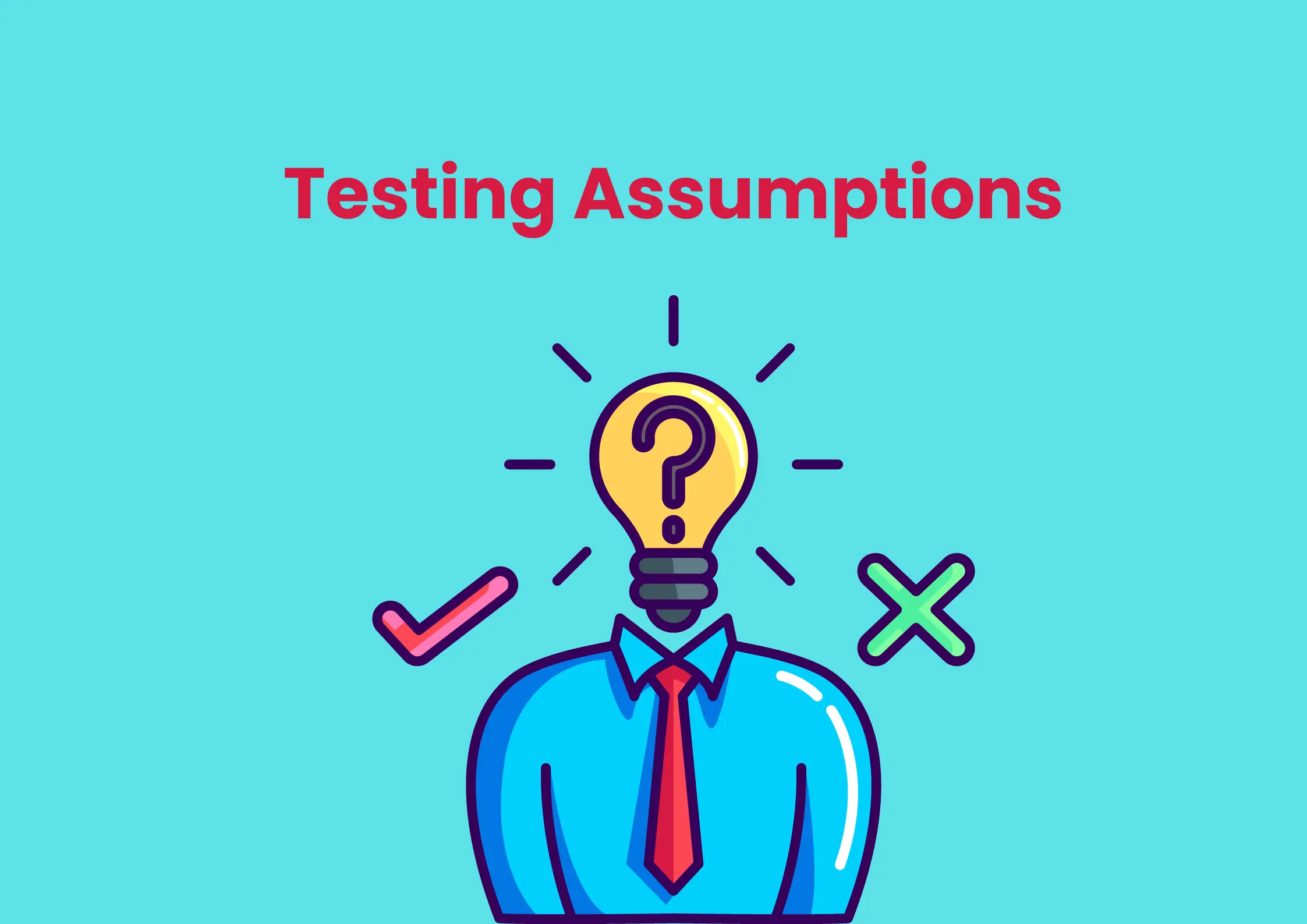📢 Sign up to my newsletter and never miss a beat!
Even though the project scope statement falls into the domain of project management and is typically created by project managers, it is of no less importance to product managers with product delivery being one of the realms of product management. It is a foundational document that outlines the objectives, deliverables, milestones and boundaries of a project. Unlike project managers, whose primary focus is on the execution and delivery of projects within the defined scope, product managers use the scope statement to ensure that the project aligns with the broader product strategy and business goals. It helps them communicate a clear vision, objectives, and expectations to the project team and stakeholders, ensuring everyone is aligned on what the project aims to achieve.
For product managers, the project scope statement is a tool for strategic planning and decision-making. It allows them to define the features and functionalities that the product will include, which in turn helps in prioritizing development efforts and allocating resources effectively. By establishing clear boundaries, the scope statement also helps in managing stakeholder expectations, preventing scope creep, and ensuring that the project remains focused on delivering value that aligns with the product vision and market needs.
Moreover, the project scope statement is essential for risk management. It enables product managers to identify potential risks and challenges associated with the project’s deliverables and constraints, allowing them to develop mitigation strategies proactively. This foresight is crucial for maintaining project feasibility and ensuring successful outcomes.
In essence, the project scope statement is not just a document for tracking project deliverables; it is a strategic asset that product managers use to guide the development process, align stakeholders, manage risks, and ensure that the project contributes to the success of the product and the overall business objectives.
1. The main components of a project scope statement
The format of your project scope statement and the components it will include depend largely on your case and subjective judgment. It is up to you and your project/product. Despite it can vary from project to project, it is widely accepted that the main components should address the following aspects (sometimes called with other terms, which represent the same things though):
Project Objective: Clearly defines the purpose of the software project, including what the project aims to achieve or deliver. This part should be specific, measurable, attainable, relevant, and time-bound (SMART).
Project Scope Description: Answers the question what the project will deliver, including the key components and features of the software product.
Deliverables: Lists the specific outputs or products that the project will deliver. For software projects, this could include the software application, documentation, training materials, and any other components required to implement the software.
Milestones: Identifies key points in the project timeline when significant parts of the project are completed. It helps in tracking progress and ensures that the project is on schedule.
Technical Requirements: Details the technical specifications and standards that the software product must meet. This includes programming languages, platforms, hardware compatibility, performance criteria, security requirements, and any other technical constraints.
Limits and Exclusions: Defines what is outside the project’s scope. This section helps to manage stakeholders’ expectations and clarifies what will not be addressed by the project.
Project Boundaries: Describes the project’s specific boundaries, including the start and end points, processes, functions, departments, and any other aspects that define the project’s limits.
Assumptions: Outlines the assumptions made during the project planning process, including the availability of resources, technology dependencies, and any other factors assumed to be in place for the project to proceed.
Constraints: Lists any restrictions or limitations that may impact the project’s schedule, budget, or resources. This could include financial constraints, time constraints, resource availability, or regulatory constraints.
Acceptance Criteria: Specifies the criteria that must be met for the project deliverables to be accepted by the stakeholders. This includes performance metrics, quality standards, and any other criteria that the product must meet.
2. An example
To get a clearer idea of how a real-world project scope statement looks like in practice, here is an example of a concise, but well-written such:
3. A step-by-step guide to writing an effective project scope statement
Now that we discussed what main components an effective project scope statement should possess and the specific areas it addresses, let`s have a closer look at the step-by-step process of writing such. Many of you might be confused over where you should start from. Here is an overview to make the project scope statement writing easier:
1. Define the Project Title and Key Dates ✅
- Project Title: Choose a concise title that clearly describes the project.
- Project Start Date: Specify when the project will begin.
- Projected Finish Date: Indicate an expected completion date.
2. Identify the Project Manager ✅
- Project Manager: Name the individual responsible for managing the project, including their contact information.
3. Outline the Project Objectives ✅
Outlining the project objectives sets the foundation for what the project aims to achieve. When defining project objectives for a software product development project, it’s important to ensure they are specific, measurable, achievable, relevant, and time-bound (SMART).
Specific
Objectives should be clear and specific to avoid any ambiguity about what the project is trying to achieve. Instead of a broad objective like “improve productivity,” specify “develop a cloud-based productivity suite that enables real-time collaboration, task management, and data analysis for mid-sized organizations.”
Measurable
Each objective should have criteria for measuring progress and success. For example, “achieve a user adoption rate of 60% within the first six months post-launch” or “reduce project management time by 20% within the first year of implementation.”
Achievable
Objectives must be realistic and attainable given the project’s resources, constraints, and timeline. Assess the team’s capabilities, technology requirements, and budget to ensure the objectives are within reach. For instance, instead of aiming to dominate the global market immediately, focus on capturing a specific segment or achieving a set number of active users.
Relevant
Ensure the objectives align with the broader business goals and add value to the intended users or stakeholders. An objective like “integrate advanced data analytics features to provide actionable insights to team leaders” aligns with the goal of enhancing decision-making processes within organizations.
Time-bound
Objectives should have a clear timeline or deadline for achievement to keep the project on track. For example, “complete the beta version of the software by July 1, 2024, for user testing” sets a specific timeframe for reaching a key project milestone.
How to Outline Project Objectives:
1. Identify the Problem or Opportunity: Start by understanding the core problem your project is solving or the opportunity it aims to capture. This will guide the direction of your objectives.
2. Engage with Stakeholders: Consult with project stakeholders, including potential users, team members, and sponsors, to gather their expectations and requirements. This engagement ensures that the objectives are aligned with their needs and expectations.
3. Draft Objectives: Based on your understanding of the problem and stakeholder input, draft a set of objectives that address these aspects. Use the SMART criteria to refine these objectives.
4. Review and Refine: Share the draft objectives with key stakeholders for feedback. Be open to revising your objectives based on this feedback to ensure they are as effective and aligned as possible.
By meticulously outlining the project objectives, you create a clear, shared vision of what the project aims to accomplish. This clarity guides decision-making throughout the project lifecycle, ensuring that all efforts are directed toward achieving these predefined objectives.
4. Describe the Project Scope ✅
Include a description of the project scope – key components, features and functionalities. These should be present in PRD document (the Product Requirements Document), so you can take them from there.
5. List the Deliverables ✅
Listing the deliverables in a project scope statement is a critical step that requires careful consideration and precise documentation. Deliverables are the tangible outcomes or products that are produced as a result of project completion. For a software product development project, these typically range from technical documentation to the final software product itself. Here is how to go about this section of the project scope statement:
Identify All Expected Deliverables
Start by brainstorming with your project team and stakeholders to identify all possible deliverables the project is expected to produce. This should include everything from software components to documentation and training materials. The goal is to have a comprehensive list that covers all outputs of the project lifecycle.
Categorize Deliverables
Once you have a list, categorize the deliverables for better organization and understanding. Categories might include technical documentation, software components, testing reports, training materials, and project management documents. This categorization helps in assigning responsibilities and tracking progress more effectively.
Define Each Deliverable
For each deliverable listed, provide a detailed description that includes its purpose, content, format, and any specific standards or requirements it must meet. This clarity ensures that everyone involved has a shared understanding of what is expected and helps to prevent misunderstandings or misaligned expectations.
Assign Ownership (optional)
You may want to add ownership against each deliverable, even though, in practice, it`s not always the case. Assigning ownership ensures accountability and helps to clarify roles within the project team. Make sure that each team member understands their responsibilities and the expectations for the deliverables they are overseeing.
6. Include milestones ✅
Milestones are significant checkpoints or events within the project lifecycle that denote the completion of key phases, deliverables, or objectives. Here’s an in-depth look at how to effectively incorporate milestones into your project planning:
Identify Key Phases and Deliverables
Begin by identifying the key phases of the project and the major deliverables associated with each phase. This could involve stages such as initiation, planning, execution, monitoring, and closing, or it could be specific to the nature of the project, such as design, development, testing, and deployment for software projects.
Define Milestones
Once you’ve identified the key phases and deliverables, define specific milestones that mark the completion of these elements. Milestones should represent significant achievements that indicate progress toward the project’s objectives. Examples of milestones include the completion of the design phase, the end of development, successful testing outcomes, and the official launch of the product.
Assign Dates to Each Milestone
For each milestone, assign a specific target date that reflects when it is expected to be achieved. These dates should be realistic, taking into account the project’s timeline, resource availability, and any dependencies between tasks. The setting of precise dates helps in creating a structured timeline for the project and facilitates time-bound progress tracking.
7. Define Project Boundaries ✅
Defining project boundaries is an essential aspect of the project scope statement, crucial for maintaining focus, managing stakeholder expectations, and preventing scope creep. This involves delineating the extent of the project by explicitly stating what will and will not be included in the project deliverables and activities. Here’s how to approach this important step:
Understand the Project’s Core Objectives
Begin by revisiting the project’s core objectives to gain a clear understanding of the primary goals and outcomes expected from the project. This understanding will serve as a foundation for establishing boundaries that align with these objectives.
Consult with Stakeholders
Engage with stakeholders to gather their perspectives on what should be included in the project. This collaborative approach helps in identifying essential features and functionalities, ensuring that the project boundaries encompass all critical elements necessary for achieving the project objectives.
Define Inclusions
Detail what the project will include. This should cover the features, functionalities, processes, and tasks that are directly related to achieving the project objectives. For a software development project, this may involve specific technologies to be used, software functionalities, user interfaces, integration capabilities, and support services. Being explicit about inclusions sets a clear direction for the project team.
Specify Exclusions
Equally important is specifying what is excluded from the project. This could involve certain features, technologies, or processes that are beyond the project’s scope due to budget, time, or resource constraints. For example, you might exclude the development of certain advanced features for the initial release, legacy system upgrades, or support for certain third-party integrations. Clearly articulating exclusions helps in managing expectations and preventing stakeholders from assuming that certain aspects will be covered when they are not.
Highlight Grey Areas
Identify and clarify any grey areas where assumptions could lead to misunderstandings about the project scope. This might include specifying the extent of post-launch support, detailing the level of customization available, or clarifying the project’s stance on future enhancements and updates.
Document and Communicate Boundaries in a Clear Way
Once the project boundaries have been defined, document them clearly in the project scope statement. Use clear, concise language to avoid ambiguity and to ensure everyone has a shared understanding of the project’s limits.
8. State Assumptions and Constraints ✅
Think about and acknowledge the external and internal factors that will influence the project’s trajectory. A thorough understanding and documentation of these elements are crucial for risk management and for setting accurate expectations among stakeholders. Here’s an in-depth look at how to elaborate on assumptions and constraints:
Assumptions
Assumptions are beliefs or conditions we consider to be true without having absolute proof at the project’s onset. They form the basis upon which the project plan is developed, affecting every aspect of project planning and execution.
- Resource Availability: It’s assumed that all necessary resources, including team members, technology, and information, will be available as required to avoid delays or bottlenecks.
- Stakeholder Support: The project relies on the assumption that it will receive continuous support from stakeholders, including timely feedback and decision-making, which is critical for maintaining project momentum.
- Technology Performance: There’s an underlying assumption that the technology and tools selected for the project will perform as expected, without significant issues that could derail development or deployment.
- Market Stability: For projects dependent on market conditions, an assumption might be made about the stability of those conditions, without significant fluctuations that could impact project outcomes or viability.
- Regulatory Environment: Assumes that there will be no significant changes in the regulatory environment that could affect project scope, deliverables, or timelines.
Constraints
Constraints are the bounding conditions that limit the project’s options. Identifying these early helps in shaping a realistic project plan and setting appropriate expectations.
- Budget: One of the most common constraints, the budget limitation dictates the scope of work that can be accomplished, potentially limiting the features, quality, or scale of the project outcomes.
- Timeline: The project’s completion date may be fixed, constraining the amount of work that can be completed or necessitating additional resources to meet the deadline.
- Resource Limitations: Constraints related to human resources (skills and availability), technology, or materials can significantly impact how and when the project objectives can be achieved.
- Regulatory or Compliance Requirements: Mandatory adherence to specific standards, laws, or regulations can constrain the project approach, design, and execution processes.
- Project Scope: The defined project scope itself can act as a constraint, limiting what can be explored or developed within the boundaries of the project.
9. Specify Acceptance Criteria ✅
At this point, you`ll need to outline the specific conditions or benchmarks that must be met for the project to be considered successful by its stakeholders. These criteria serve as a concrete set of standards by which the project’s outcomes are judged, ensuring that all parties have a clear understanding of what is expected. Here’s how to effectively detail acceptance criteria:
Define Clear, Measurable Goals
Acceptance criteria should be clear and measurable, providing specific targets or conditions that clearly indicate whether the project objectives have been achieved. This might include quantitative measures such as performance metrics, completion deadlines, budget adherence, and qualitative benchmarks related to user satisfaction or product quality.
Align with Project Objectives
Ensure that the acceptance criteria are directly aligned with the project’s objectives. Each criterion should reflect a component of the project’s intended outcome, ensuring that success, as defined by the acceptance criteria, equates to the achievement of the project’s goals.
Incorporate Stakeholder Input
Engage with all key stakeholders to gather their perspectives on what constitutes a successful project outcome. This collaborative approach ensures that the acceptance criteria reflect the needs and expectations of those who have a vested interest in the project’s success, including project sponsors, end-users, and regulatory bodies if applicable.
Categorize Criteria
Organize the acceptance criteria into relevant categories such as functionality, usability, performance, security, and compliance. This categorization helps in ensuring that all aspects of the project are covered and that the criteria provide a comprehensive framework for evaluating success.
Use Specific, Actionable Language
Write the acceptance criteria using specific, actionable language that leaves no room for ambiguity. Clearly define any technical terms or metrics used, ensuring that all stakeholders have a common understanding of what each criterion means.
Include Testing and Validation Methods
For each set of criteria, specify the methods by which compliance will be tested or validated. This might involve user acceptance testing, performance benchmarking, security audits, or compliance certification processes. Detailing these methods as part of the acceptance criteria ensures that there is a clear plan for how success will be measured.
Want to Explore More on This Topic?
Delve deeper with these curated resources! Discover insightful articles, expert blogs, and top-rated books to enhance your knowledge and skills.
Note: Some links are affiliate links, which means I may earn a small commission if you decide to make a purchase.
This book provides a comprehensive guide to managing project scope, including how to elicit, document, and manage requirements to control scope creep in IT projects.




